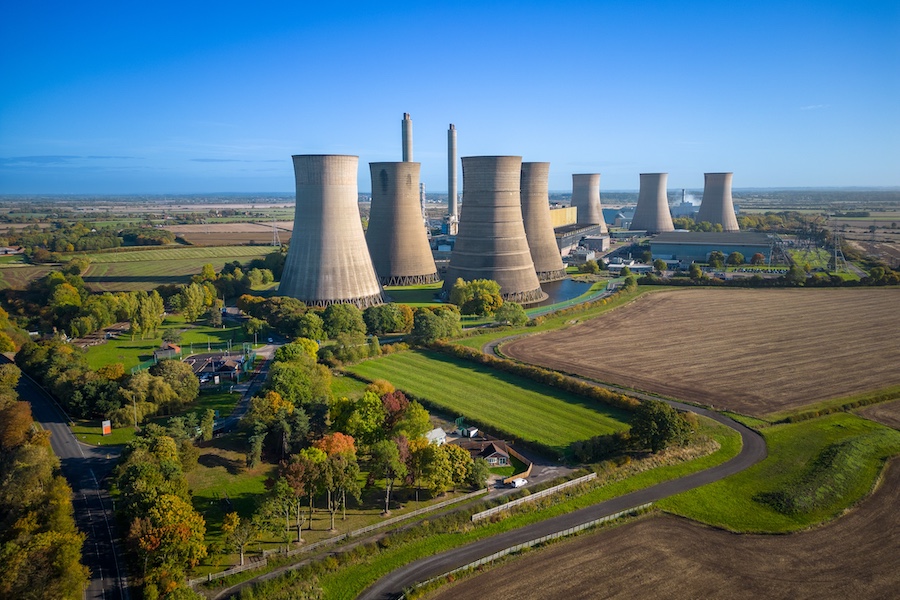
Nuclear energy has a wide range of advantages over fossil fuels. While it isn’t carbon-free, it has a much smaller carbon footprint than coal, oil and gas. While it isn’t strictly a renewable, it’s a remarkably efficient way to produce energy. What’s more, it doesn’t depend on the weather for production like wind and solar power. It should be a popular way to transition a country’s energy setup and combat climate change.
Unfortunately, the UK has always lagged behind similar countries (such as France) when it comes to the proportion of energy sourced from nuclear power. There are several reasons for this, including cost, safety concerns and planning obstacles. However, there are signs that nuclear power is making a comeback in the UK, with a two-pronged strategy designed to increase the contribution of nuclear to the nation’s energy landscape.
In this article, we’ll tell you about the two strands of this strategy.
1 – Extending the life of existing nuclear power stations
The first part of the strategy is keeping the handful of nuclear power stations in the UK active for longer.
Four nuclear power plants operated by EDF will be given regulatory approval to continue operating, despite being past their original end-of-life date. They are:
- Hartlepool
- Torness, East Lothian
- Heysham 1 and 2
Hartlepool and Heysham 1 were due to close this year, but will now remain open until at least 2026. Torness and Heysham 2 were due to close in 2028, but will now keep operating past that date.
If these power stations were all running well, it would be the more efficient, less wasteful thing to keep them open. However, there are some safety concerns around these plants. Torness had its projected lifespan reduced by two years in 2021 because cracks were found in some of the bricks. Meanwhile, at Heysham 1, a valve controlling steam from the reactor failed, with the resulting link narrowly avoiding serious injury to staff.
However, with pressing issues across the energy industry, including delays to new nuclear energy plants – and ambitious net zero targets to hit – the government decided that keeping these existing stations open is the best policy.
2 – Constructing new nuclear power stations
The other part of the plan is building new nuclear power stations. This is a huge undertaking, not least because there hasn’t been a new nuclear reactor built in the UK for more than 30 years, and nuclear power plants take a long time to construct.
There are two new reactors currently being built:
- Hinkley Point C (Somerset)
- Sizewell C (Suffolk)
The Hinkley Point C project is well underway. In December 2024, engineers installed the first of a pair of RPVs (reactor pressure vessels). This RPV is the steel container that holds the nuclear fuel, which creates the steam to turn what will be the world’s largest turbine. Installing the RPV was a delicate job, but it was a success. When Hinkley Point C is up and running, it will provide enough energy to power 7% of homes in the UK. This date is projected to be sometime between 2029 and 2031.
Sizewell C is still in the planning stage. However, it is progressing towards a start date, with construction projected to take between 9 and 12 years. The High Court recently rejected a pressure group’s challenge to halt the project. Stop Sizewell C challenged the Office for Nuclear Regulation’s (ONR) decision to grant Sizewell C a site licence, but the High Court said the challenge was ‘totally without merit’.
Like Hinkley Point C, Sizewell C will have enough capacity to power around 7% of the UK’s demand for electricity, as well as create jobs in the local area.
Industry view
While the decision to extend the life of four of the UK’s existing nuclear power stations comes with some risk, on balance, it’s worth doing. As the Chief Executive of the Nuclear Industry points out, these extensions will cut bills, reduce emissions and protect jobs. Nuclear is currently making the biggest contribution to clean energy in the UK and is propping up the grid when other sources are less reliable. He points out that without the power generated by nuclear, regular blackouts would be a significant possibility.
Regarding building new stations, investing in nuclear energy is something the UK government (of whichever party) should have done so many years ago. If we had done this, we’d already have lower bills, a greener grid and we’d have coped with energy crises much more effectively. But of course, if you can’t start yesterday, today is the best time to start.
It’s welcome to see both of these developments with nuclear power and we hope to see many more.
